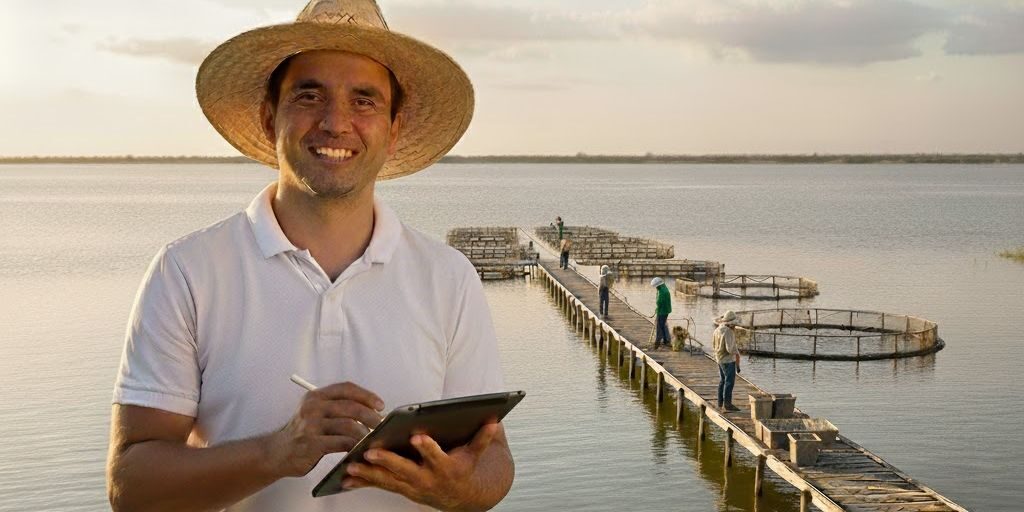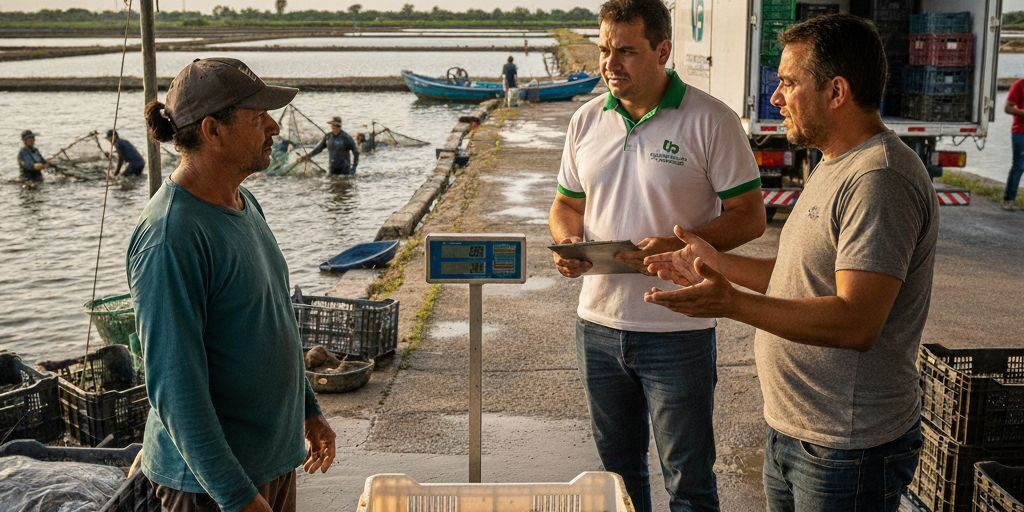- Software Gestor para Aquicultura
- (85) 2139-6730
- contato@despesca.com.br
Cost Per Kilo: Do You REALLY Know How Much It Costs to Produce Your Shrimp?

Animal Transit Guide (GTA): Everything You Need to Know to Legally and Effectively Move and Receive Your Post-Larvae and Fingerlings
10/09/2025
Economic Feasibility Analysis: A Step-by-Step Guide to Planning a New Aquaculture Project or Expanding Your Farm
12/09/2025The Importance of Knowing the True Production Cost
In modern shrimp farming, the pursuit of efficiency and profitability is constant. Many producers, however, focus only on harvest results and sales price, neglecting one of the most critical indicators for the financial health of the business: the actual cost to produce each kilo of shrimp. Knowing this number in detail is not just an accounting exercise, but a strategic tool that allows for more assertive decisions, optimized investments, and ensures the long-term sustainability of the operation.
Lack of precise cost control can lead to a false perception of profit. A farm might have excellent productivity per hectare, but if costs like feed, energy, and labor are uncontrolled, the profit margin can be minimal or even nonexistent. The calculation of cost per kilo (/kg) reveals the true efficiency of the production cycle and serves as a thermometer for business management.
Unraveling the Components of Production Cost
To accurately calculate the cost per kilo, it is essential to dissect all expenses involved in the production cycle. These costs can be divided into two main categories: variable costs and fixed costs.
Variable Costs: These are expenses that change proportionally to the volume of production. The main one is feed, which typically represents between 50% and 60% of the total cost. Other variable costs include:
- Post-larvae (PLs): The genetic quality and health of PLs directly impact survival and production performance.
- Electricity: Essential for aeration, pumping, and other operations.
- Inputs and probiotics: Products for water quality correction and animal health improvement.
- Casual labor: Hires for harvests or specific, seasonal maintenance.
Fixed Costs: These are expenses the farm incurs regardless of the production volume. They include:
- Fixed labor: Salaries and charges for permanent employees (manager, technicians, operators).
- Depreciation: Wear and tear of equipment, structures (ponds, sluice gates), and vehicles.
- Maintenance: Repairs and preventive maintenance of aerators, pumps, and infrastructure.
- Taxes and licensing: Fees, environmental licenses, and other tributes.
- Administrative: Office expenses, communication, and insurance.
The Challenge of Cost Allocation for Maximum Accuracy
Simply listing costs is not enough. One of the biggest challenges to achieving accuracy in cost calculation is cost allocation, i.e., the proportional distribution of expenses that do not belong to a single pond or cycle. Many fixed costs and even some variable ones are shared across the entire operation. For example, how do you allocate the farm manager’s salary, the depreciation of a tractor used in all ponds, or a large volume purchase of lime that will be used over several months?
Attributing these costs to a single cycle would completely distort the profitability analysis. The allocation technique solves this problem by distributing these expenses among different cost centers (the production ponds) based on logical criteria. The most common criteria for allocation include:
- By area (ha): Ideal for costs related to land use and infrastructure.
- By cycle time: Applicable for continuous expenses, such as administrative salaries.
- By biomass or number of animals: For inputs or costs related to stocking density.
Performing cost allocation correctly and consistently is crucial. Without it, a cycle might appear artificially profitable simply because it coincided with a month of lower general expenses, masking management inefficiencies and leading to misleading conclusions about actual performance.
The Role of Technology in Cost Management and Allocation
Controlling all these cost components, especially by manually performing allocation, is an extremely complex and error-prone task. This is where technology becomes indispensable. Specialized management software, such as Despesca, is designed to handle this complexity in an automated and precise manner.
With robust management system, producers can configure allocation rules for shared expenses. When recording a cost, such as payroll or the headquarters’ electricity bill, the system automatically distributes it among active cycles, following predefined criteria (e.g., by area). This ensures that the cost per kilo for each pond accurately reflects its share of the farm’s total expenses. This functionality eliminates guesswork and provides a reliable data basis for comparisons and performance analyses.
Making Strategic Decisions Based on Data
Knowing the true cost per kilo, calculated precisely through correct allocation, transforms farm management. With this information in hand, producers can:
- Set more strategic sales prices: Knowing their true margin, they can negotiate with greater confidence.
- Identify the most efficient ponds: Compare actual performance across different areas of the farm.
- Evaluate investment viability: Decide on new technologies based on more accurate cost projections.
- Plan future cycles: Use reliable historical data to project costs and set realistic production goals.
In a competitive market, data-driven management is no longer a differential but a necessity. Tools like Despesca, which automate cost calculation and allocation, provide the instruments for shrimp farmers to take full control of their operation, transforming data into increased profitability.



